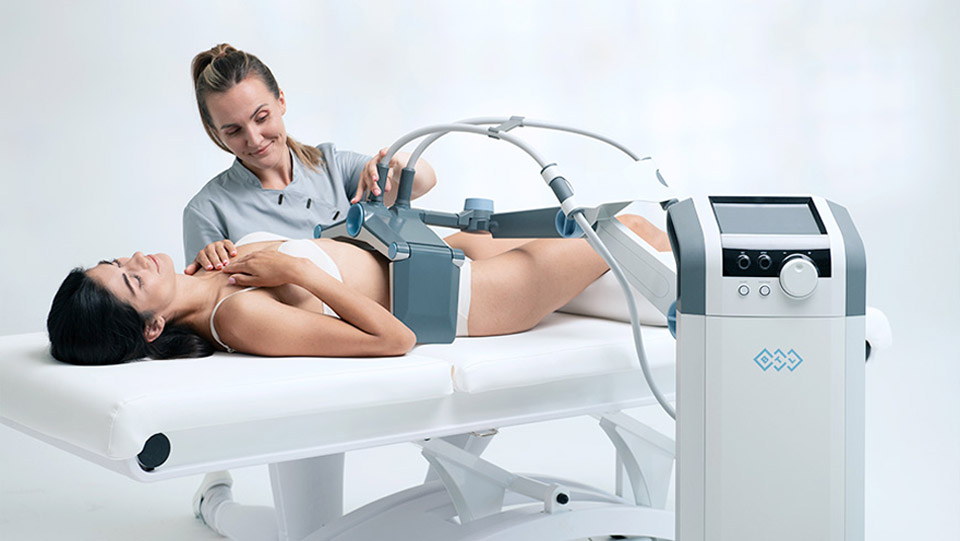Permanent fat removal is a game-changer for cosmetic surgery patients tired of temporary fixes, offering a solution through cosmetic treatment and laser treatment in cosmetic dermatology. Unlike diets and workouts that can fade, this approach offers lasting results following treatments from a dermatologist. Many struggle with stubborn fat that just won’t budge, leaving them frustrated, according to their dermatologist.
With permanent fat removal from a dermatologist, you can finally achieve the body you desire without the constant battle. This method, recommended by a dermatologist, targets specific areas, providing a solution that sticks. Say goodbye to yo-yo dieting and hello to a more confident you with dermatologist-approved methods. Whether you’re looking to enhance your figure or boost your self-esteem, this dermatologist option stands out as a reliable choice. Discover how permanent fat removal, guided by a dermatologist, can transform your life and help you feel great in your skin.
Understanding Non-Invasive Fat Removal
Definition
Non-invasive fat removal, as advised by a dermatologist, refers to procedures that eliminate fat cells without surgery. These methods use handheld devices or injections to target and destroy fat cells. Patients often prefer this approach due to its minimal recovery time and lower risk compared to surgical options.
FDA Approval
Several devices have received FDA approval for non-invasive fat removal. These devices utilize various techniques, such as cold, heat, or sound waves.
-
Cryolipolysis uses cold temperatures to freeze fat cells. This process causes the fat cells to break down naturally.
-
Ultrasound technology employs sound waves to disrupt fat cell membranes. This technique helps reduce localized fat deposits.
-
Radiofrequency heats the skin and underlying tissues. This process stimulates collagen production while targeting fat cells.
The FDA monitors these devices closely for safety and effectiveness. Each device must undergo rigorous testing before it can be approved for public use.
Injection Methods
Injections are another method of non-invasive fat removal. These injections contain a compound similar to bile acid. Bile acid helps digest fats in the body. When injected into specific areas, it dissolves fat cells effectively.
The most common injection used is deoxycholic acid. It targets submental fat, commonly known as a double chin. Clinical studies show that this treatment can significantly reduce fat volume in treated areas.
Patients typically require multiple sessions for optimal results. The body gradually metabolizes the dissolved fat over several weeks.
Effectiveness and Considerations
Non-invasive fat removal offers several advantages. Patients experience less discomfort and shorter recovery times than traditional liposuction. Many individuals return to their daily activities immediately after treatment.
However, results vary based on individual factors, including body type and lifestyle choices. Maintaining a healthy diet and regular exercise enhances the effectiveness of these procedures.
Not everyone is a suitable candidate for non-invasive methods. Those with certain medical conditions or skin types may need alternative treatments. Consulting with a qualified professional is essential for determining the best option.
Comparing Non-Invasive Methods to Traditional Liposuction
Traditional Liposuction
Traditional liposuction is a surgical procedure. It requires incisions in the skin. Surgeons physically remove fat using a suction technique. This method can effectively target larger areas of fat. However, it involves more risks, such as infection and scarring.
Recovery from traditional liposuction can take weeks. Patients often experience swelling and bruising. Some may require pain medication during recovery. The process can be uncomfortable, limiting daily activities for a time.
Non-Invasive Methods
Non-invasive methods include techniques like laser liposuction. These procedures do not require any incisions. Instead, they use energy-based devices to break down fat cells. They are designed to contour the body without surgery.
These procedures have minimal downtime. Patients can often return to their normal activities right after treatment. This is a significant advantage for those with busy lives. Many prefer non-invasive options due to their convenience.
Risks Involved
Surgical options carry higher risks compared to non-invasive procedures. Complications from traditional liposuction can include blood clots and anesthesia reactions. Non-invasive methods typically have fewer side effects. Most patients report only mild discomfort or temporary redness.
The lower risk profile makes non-invasive methods appealing for many individuals. People who wish to avoid surgery often choose these alternatives.
Effectiveness
Effectiveness varies between traditional liposuction and non-invasive methods. Traditional liposuction provides immediate results in larger areas. Non-invasive methods may require multiple sessions for optimal results. However, many patients find satisfaction with gradual improvements over time.
Studies show that both methods can lead to significant fat reduction. The choice often depends on individual goals and preferences.
Cost Considerations
Cost is another factor when comparing these options. Traditional liposuction tends to be more expensive due to surgical fees and longer recovery times. Non-invasive methods generally cost less per session but may require several treatments.
Patients should consider their budget when deciding on a cosmetic procedure. Understanding the financial implications will help make an informed choice.
How Non-Invasive Procedures Work
Cold Treatments
Cold treatments use a process called cryolipolysis. This technique cools fat cells to a temperature that triggers their natural death. The body gradually eliminates these dead cells over time.
This method focuses on specific areas, such as the abdomen or thighs. It does not require any anesthesia. Patients can often return to their daily activities right after the procedure.
Heat Treatments
Heat treatments utilize radiofrequency energy. This energy heats fat cells, causing them to break down. The heat also tightens the skin, giving a smoother appearance.
These procedures are comfortable and usually do not need sedation. Many people experience minimal discomfort during treatment. Results can appear gradually as the body processes the destroyed fat cells.
Sound Wave Treatments
nd wave treatments employ ultrasound technology. This method directs sound waves into the fat layers beneath the skin. These waves disrupt fat cell membranes, leading to their destruction.
Patients enjoy quick sessions with little to no downtime. This noninvasive treatment is suitable for various body areas, including the neck.
Injection Techniques
Injection techniques involve using substances similar to bile acids. These injections target specific fat deposits under the skin. They dissolve fat cells, allowing the body to eliminate them naturally.
This procedure is typically done in a doctor’s office. Patients may notice results within weeks after treatment. The injections do not require surgery or anesthesia, making them convenient.
Comparing Methods
Noninvasive treatments offer several advantages over invasive options like liposuction. They minimize recovery time and reduce risks associated with surgical treatments. Many patients prefer these methods due to their effectiveness and comfort.
While traditional liposuction requires incisions and general anesthesia, noninvasive options do not. Patients can often resume normal activities soon after treatment.
Limitations of Non-Invasive Procedures
Noninvasive procedures have some limitations compared to surgical treatments. They may not be suitable for everyone, especially those with significant weight issues. These methods work best for individuals close to their ideal weight looking for targeted fat removal.
Results from noninvasive options can vary based on individual factors such as metabolism and lifestyle choices. Patience is essential, as full results may take time to appear.
Permanence of Non-Invasive Results
Fat Cell Removal
Destroyed fat cells are permanently removed from the body through non-invasive procedures. These treatments target specific areas, effectively eliminating fat cells without surgery. Once these cells are destroyed, they do not regenerate.
The human body has a fixed number of fat cells at birth. This means that when cells are removed, they are gone for good. The body cannot create new fat cells to replace them. This permanence is a significant advantage of non-invasive fat removal methods.
Weight Gain Impact
Weight gain after treatment can still affect remaining fat cells in the body. If a person gains weight, those untreated fat cells may expand. However, the areas that received treatment will typically show less impact. This is because there are fewer fat cells in those treated regions.
Studies indicate that maintaining a healthy lifestyle can enhance the results over time. Regular exercise and a balanced diet help prevent weight gain and maintain body shape.
Noticeable Results Over Time
Patients often see noticeable results within weeks of treatment. Full results may take several months to appear as the body continues to eliminate the destroyed fat cells. During this time, individuals may notice improved contours and a slimmer appearance.
A study published in Investigational Dermatology found that most patients were satisfied with their results after six months. Many reported feeling more confident in their bodies and were pleased with their new shapes.
Scar Considerations
Non-invasive procedures generally leave no noticeable scars. Unlike surgical methods, which involve incisions, these treatments use techniques like cooling or ultrasound to destroy fat cells without damaging the skin surface. Patients appreciate this aspect as it allows for quick recovery and minimal downtime.
The absence of scarring contributes to overall satisfaction with non-invasive treatments. People can return to their daily activities shortly after the procedure, making it a convenient option for many.
Helping Body Confidence
These procedures can significantly help improve body confidence. Many individuals struggle with stubborn fat deposits despite diet and exercise efforts. Non-invasive options offer an effective way to address these concerns without invasive surgery.
Feeling good about one’s appearance can lead to positive changes in lifestyle and self-esteem. Patients often report engaging more in social activities after seeing their results.
Factors Influencing Long-Term Outcomes
Weight Stability
Maintaining a stable weight is crucial for achieving lasting results in permanent fat removal. Weight fluctuations can lead to the re-expansion of fat cells. This can diminish the effects of various treatment options. Many people find that their results fade if they do not keep their weight in check.
Patients should focus on healthy eating and regular exercise. These lifestyle choices help maintain a stable weight. Studies show that individuals who adopt these habits have better outcomes over time. They experience fewer setbacks compared to those who do not.
Metabolism and Lifestyle
Individual metabolism plays a significant role in long-term outcomes. Each person’s body processes food differently. Some may burn calories faster, while others may gain weight more easily. This variability affects how well treatments work for different people.
Lifestyle choices also impact results. Smoking, excessive alcohol consumption, and poor diet can hinder progress. People who lead active lives tend to see better results from fat removal procedures. Those who prioritize health often experience longer-lasting effects.
Follow-Up Treatments
Follow-up treatments may be necessary to maintain desired results. Many technologies used in dermatology require maintenance sessions. For example, some patients need additional treatments every few months to keep fat at bay.
These follow-ups help manage any new fat cell formation. They also ensure that the treated areas remain contoured as desired. Patients should discuss their specific needs with healthcare providers after initial treatments.
Treatment Options
Various treatment options exist for permanent fat removal. Technologies such as CoolSculpting and laser therapy target fat cells effectively. Each method has its advantages depending on the area being treated.
For instance, the chin area often requires specialized techniques due to its unique structure. Patients should consult with professionals to determine the best approach for their needs.
Number of Cells
The number of fat cells in a person’s body can also influence outcomes. Studies indicate that people with more fat cells may face challenges in maintaining results. The removal of these cells through treatment options leads to changes in body composition.
Understanding how many fat cells exist before treatment can guide expectations and planning. Healthcare providers can assess individual conditions and tailor approaches accordingly.
Recovery Time for Non-Invasive Methods
Immediate Resumption
Most individuals can return to their daily activities right after the treatment. Non-invasive methods for permanent fat removal are designed to minimize disruption. Many patients report feeling well enough to go back to work or engage in light activities the same day. This quick recovery is one of the appealing aspects of these treatment options.
Healing Timeline
Full results from non-invasive procedures usually appear between 3 to 6 months post-treatment. Initially, some changes may be noticeable within just a few weeks. However, the body continues to eliminate fat cells gradually. This extended healing period allows for optimal results. Patience is essential as the final outcome develops over time.
Minimal Downtime
Downtime associated with these treatments is generally minimal. Most people experience only temporary side effects like swelling or bruising. These effects typically resolve within a few days. The discomfort is often mild and manageable with over-the-counter pain relievers.
In contrast, invasive procedures usually involve longer recovery times and more significant downtime. Non-invasive options provide an effective alternative for those seeking fat removal without extensive interruption to their lives.
Side Effects Awareness
Being aware of potential side effects is crucial. Common reactions include redness and tenderness at the treatment site. These symptoms usually diminish quickly. Patients should monitor their condition and consult a healthcare professional if any unusual symptoms arise.
Long-Term Considerations
The long-term effectiveness of non-invasive fat removal methods depends on various factors discussed earlier. Maintaining a healthy lifestyle plays a significant role in achieving lasting results. Regular exercise and balanced nutrition support the body’s natural processes.
Patients should also set realistic expectations about what these treatments can achieve. While many experience satisfactory outcomes, individual results can vary based on personal health and adherence to post-treatment guidelines.
Potential Side Effects and Risks
Common Side Effects
Many people experience temporary side effects after permanent fat removal procedures. These include swelling, bruising, and redness at the treatment site. Swelling can last for several days. Bruising might take a couple of weeks to fade completely. Redness usually subsides within a few hours but can linger longer in some cases.
Discomfort is another frequent issue. Patients often report mild pain or soreness after the procedure. This discomfort typically resolves itself within a few days. Most patients find over-the-counter pain relievers sufficient for managing any discomfort.
Rare Risks
e risks are less common but still possible. Skin sensitivity can occur, making the area more reactive to heat or cold. Uneven fat reduction may also happen, leading to an uneven appearance post-procedure.
In rare cases, individuals may develop common skin conditions like dermatitis or acne flare-ups. Such reactions can be concerning but are generally manageable with proper care. Consulting with a qualified dermatologist can help identify any underlying issues that may lead to these conditions.
Consultation Importance
It’s crucial to consult with a qualified dermatologist before undergoing any fat removal procedure. They can provide valuable insights into potential risks specific to your skin type and overall health. A professional evaluation helps minimize the likelihood of complications.
Dermatologists can explain how different methods, such as laser lipo, work and what risks they entail. Understanding the full effect of treatments allows patients to make informed decisions about their options.
Final Thoughts
Being aware of potential side effects and risks is essential for anyone considering permanent fat removal. While most side effects are temporary and minor, understanding the rare risks helps set realistic expectations.
Consulting with a healthcare provider ensures you have all the necessary information. This approach allows for a safer experience tailored to individual needs.

Ideal Candidates for Non-Invasive Fat Removal
Good Candidates
Individuals close to their ideal weight often make the best candidates for non-invasive fat removal. They may struggle with stubborn fat areas that resist diet and exercise. Common problem spots include the abdomen, thighs, and flanks. These individuals usually have a healthy lifestyle but cannot eliminate specific fat deposits.
Candidates should also possess realistic expectations about the results. Non-invasive treatments like SculpSure offer subtle changes rather than dramatic transformations. Patients should understand that these procedures complement a healthy lifestyle. They are not replacements for weight loss or significant body changes.
Medical Considerations
Certain medical conditions can affect candidacy for non-invasive fat removal. Individuals with skin disorders, autoimmune diseases, or serious health issues must consult a doctor first. A healthcare provider can help determine if the treatment is safe. This step is crucial to avoid complications during or after the procedure.
A cosmetic surgeon will evaluate each candidate’s overall health and medical history. This evaluation helps identify any potential risks involved in the treatment. People with loose skin or excess chin fat might need different approaches. For them, surgical options may be more suitable.
Treatment Options
Various laser treatments exist for permanent fat removal. SculpSure is one of the most popular options. It uses laser technology to target and destroy fat cells without harming surrounding tissue. Other treatments include CoolSculpting, which freezes fat cells, and ultrasound-based methods.
Consulting a cosmetic specialist is important to find the right treatment option. Specialists assess individual needs and recommend appropriate procedures. They consider factors like age, skin type, and desired outcomes.
Emotional Factors
Emotional readiness plays a role in candidacy as well. Patients should feel comfortable with their decision to undergo treatment. Anxiety or uncertainty can lead to dissatisfaction with results later on. A supportive environment during recovery can enhance overall satisfaction.
It’s essential to have open discussions with dermatologists or facial plastic surgery experts before proceeding. These professionals provide insights into what to expect from the procedure. They also address any concerns about side effects or recovery time.
Maintenance Tips for Lasting Results
Healthy Lifestyle
Maintaining a healthy diet is crucial after cosmetic treatments. Focus on eating whole foods, like fruits, vegetables, and lean proteins. These foods provide essential nutrients that support skin health. Regular exercise also plays a key role. Aim for at least 150 minutes of moderate aerobic activity each week. This helps keep your weight stable and boosts overall wellness.
Monitoring your calorie intake can help prevent weight gain. Avoid processed foods high in sugar and fat. Instead, prepare meals at home to control ingredients and portion sizes. Staying hydrated is equally important. Drink plenty of water daily to keep your skin looking fresh and smooth.
Follow-Up Treatments
Periodic follow-up treatments may be necessary to sustain results from the last treatment. Many patients benefit from multiple treatments to maintain their appearance over time. Consult with your cosmetic professional about when to schedule these sessions. They may recommend additional treatments every six months or annually.
These follow-ups can enhance the effects of previous sessions. They also help address any new concerns that arise after the initial treatment. Keeping an open line of communication with your provider ensures you get the best care possible.
Weight Monitoring
Monitoring your weight is vital after undergoing cosmetic procedures. Significant fluctuations can affect the treated areas, leading to undesirable results. Weigh yourself regularly to stay aware of any changes.
If you notice weight gain, adjust your diet and exercise routine promptly. This proactive approach helps maintain the benefits of your treatment. Remember, even small changes in weight can impact how your body looks post-treatment.
Consider keeping a food journal to track what you eat. This can highlight areas needing adjustment in your diet.
Skin Care Regimen
A consistent skin care regimen can enhance the results from cosmetic treatments as well. Use products designed for your specific skin type. Look for those that target issues like dark spots or deep wrinkles if they are present.
Incorporate sunscreen into your daily routine to protect treated areas from sun damage. UV rays can cause premature aging and affect skin texture. Regular exfoliation also promotes smoother skin by removing dead cells.
Activity Adjustments
Adjusting activities post-treatment is essential for long-lasting results. Avoid strenuous workouts immediately after treatments, as this can irritate the skin. Gradually return to normal activities based on your provider’s advice.
Engaging in low-impact exercises like walking or swimming can help maintain fitness without stressing treated areas.
Closing Thoughts
Non-invasive fat removal offers a modern solution for those seeking to shed stubborn fat without the downtime of traditional liposuction. You’ve learned how these methods work and their potential for lasting results. While they can be effective, your commitment to maintenance plays a crucial role in achieving the best outcomes.
Understanding the factors that influence long-term success helps you make informed choices. If you’re considering these procedures, consult with a qualified professional to find the best fit for your needs. Take charge of your body and explore non-invasive options that suit your lifestyle. Your journey towards a more confident you starts now—don’t wait any longer!
Frequently Asked Questions
What is non-invasive fat removal?
Non-invasive fat removal refers to procedures that eliminate fat without surgery. Techniques include cryolipolysis, laser therapy, and ultrasound. These methods target fat cells while sparing surrounding tissue.
How does non-invasive fat removal compare to liposuction?
Unlike traditional liposuction, which requires anesthesia and incisions, non-invasive methods are safer and involve minimal downtime. Results may vary but often require multiple sessions for optimal outcomes.
Are the results from non-invasive fat removal permanent?
Results can be long-lasting if combined with a healthy lifestyle. However, weight gain can affect the remaining fat cells. Maintenance is key for sustaining results.
Who are ideal candidates for non-invasive fat removal?
Ideal candidates are close to their target weight but struggle with stubborn fat deposits. Those with realistic expectations and good skin elasticity typically see the best results.
What are the potential side effects of non-invasive procedures?
Common side effects include temporary redness, swelling, or bruising at the treatment site. Serious complications are rare but can occur. Always consult a qualified professional before proceeding.
How long is the recovery time after non-invasive treatments?
Recovery time is generally minimal. Most patients resume normal activities immediately, though some may experience mild discomfort for a few days post-treatment.
What maintenance tips can help ensure lasting results?
To maintain results, adopt a balanced diet and regular exercise routine. Staying hydrated and managing stress also contribute to long-term success after treatment.





